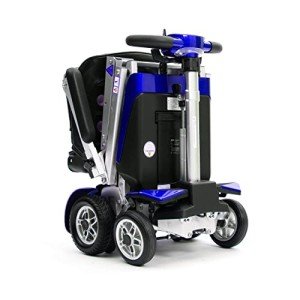A Comprehensive Guide to Buying a Mobility Scooter
Mobility scooters have ended up being an essential tool for many people seeking to improve their independence and mobility. With a huge selection of designs and features available, picking the ideal mobility scooter can be daunting. This article provides a useful guide to assist customers browse their alternatives, evaluate their requirements, and make an informed purchase.
Understanding Mobility Scooters
Mobility scooters are electric automobiles designed for people who experience mobility difficulties. They are especially useful for seniors, those with disabilities, or individuals recovering from injuries. Mobility scooters can differ widely in regards to design, functions, and prices.
Kinds Of Mobility Scooters
Before starting a purchase, it's important to comprehend the various kinds of mobility scooters offered:
Three-Wheel Scooters:
- Generally more maneuverable in tight spaces
- Lightweight and portable
- Ideal for indoor usage
Four-Wheel Scooters:
- Offer higher stability and balance
- Ideal for outside use over numerous terrains
- Normally have a longer battery life
Foldable/Portable Scooters:
- Designed to be quickly carried and saved
- Can often fit in the trunk of a car
- Suitable for those who take a trip often
Sturdy Scooters:
- Built to accommodate bigger people
- Often come with more robust functions for outdoor use
- Generally geared up with bigger batteries for prolonged variety
Aspects to Consider When Buying a Mobility Scooter
1. Weight Capacity
Pick a mobility scooter that can support the user's weight. The majority of scooters have a weight limit varying from 250 to 500 pounds. It is crucial to guarantee that the scooter can accommodate the user conveniently.
2. Range and Battery Life
The range is how far the mobility scooter can travel on a single charge. Common varieties vary between 10 to 30 miles. Think about the user's daily activities and pick a scooter with an ideal range.
3. Scooter Dimensions
Consider the size of the scooter, including its weight and dimensions. A more compact scooter might be perfect for narrow corridors and tight areas, while larger designs offer extra stability and comfort.
4. Terrain Capability
Evaluate where the scooter will primarily be utilized. If the user prepares to travel primarily on pavement, a lightweight model may be adequate. Nevertheless, if the user needs to traverse gravel or uneven surface areas, think about a four-wheel scooter built for off-road use.
Top Features to Look For
Convenience
- Adjustable Seats: Look for scooters with cushioned and height-adjustable seats to make sure comfort throughout travel.
- Armrests: These boost security and assistance while navigating.
Security and Visibility
- Headlights and Taillights: Essential for nighttime use.
- Turn Signals and Reflectors: Improve exposure and safety while on the roadway.
User-Friendly Controls
- Joystick or Drive Controls: These must be instinctive and simple to control.
- Easy-to-Read Displays: A control panel that shows battery life, speed, and distance can boost the user experience.
Extra Features
- Storage Compartments: These offer added convenience for carrying individual products while on the go.
- Weather condition Protection: Consider designs with rain covers or windscreens if used in variable weather conditions.
Expense Considerations
When budgeting for a mobility scooter, costs can vary anywhere from ₤ 500 to over ₤ 5,000 depending on the design, features, and brand. Additional costs may consist of:
- Extended Warranty: Protects versus problems and can save cash in the long run.
- Accessories: Optional features, such as upgraded seats, lights, or storage services.
| Feature | Cost Range |
|---|---|
| Basic Models | ₤ 500 - ₤ 1,500 |
| Mid-Range Models | ₤ 1,500 - ₤ 3,000 |
| High-End Models | ₤ 3,000 - ₤ 5,000 |
Financing Options
Lots of merchants provide funding strategies, and some local government initiatives may offer grants or support for those in need. Investigate potential monetary help with neighborhood resources or mobility service companies.
FAQs about Buying a Mobility Scooter
What is the difference between a mobility scooter and a wheelchair?
Mobility scooters are motorized and permit users to navigate separately, while wheelchairs may require physical assistance or manual operation.
How do I maintain a mobility scooter?
Regular maintenance includes examining battery life, cleaning the scooter, and examining tires and brakes. Constantly describe the user manual for particular standards.
Can mobility scooters be utilized indoors?
Yes, lots of designs are designed for both indoor and outside use. However, three-wheel scooters tend to be much better matched for indoor navigation due to their tighter turning radius.
Are mobility scooters covered by insurance?
Some insurance prepares cover a portion of the costs for mobility scooters if they are deemed clinically necessary. Contact your supplier for specific information.
How quickly can a mobility scooter go?
Most mobility scooters have a maximum speed varying from 4 to 8 mph. However, the appropriate pace might vary depending on local guidelines.
Purchasing a mobility scooter can substantially boost one's independence and lifestyle. By understanding the types, features, and expenses associated with mobility scooters, prospective buyers can make educated decisions that suit their requirements and choices. click the up coming webpage and thorough research are crucial to making sure fulfillment with this crucial investment.

